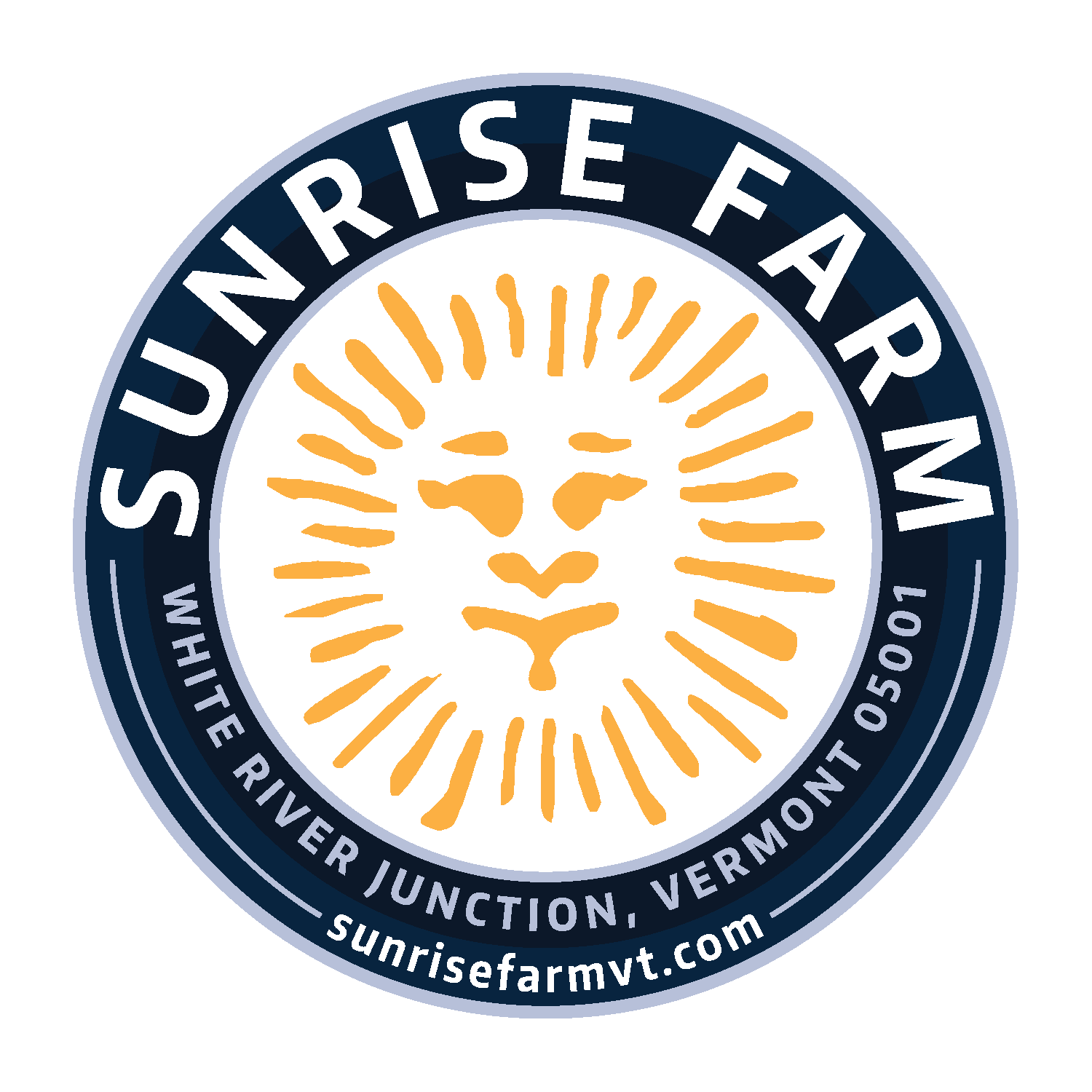Sunrise is a Vermont hill farm that has been producing food and fiber for more than two centuries.
Farm History
Hartford, Vermont, was chartered in 1763, and European-derived settlement began soon afterward. We don't know when Sunrise was first cleared, but given its good soils and close proximity to the Connecticut and Ottauquechee Rivers, it would have been one of the first parts of the town to be occupied. Potash for export down the river was probably the first cash crop as the forest was cut and burned to make way for pasture.
In 1850, according to the first census of Vermont agriculture, Sunrise was 80 acres cleared and 20 acres of woods. Livestock totaled 3 horses, 4 cows, 4 oxen, 2 pigs, and 100 sheep. Sales for the year were 300 lbs wool, 500 lbs butter, 200 lbs cheese, 50 lbs maple sugar (not syrup, take note), and 25 lbs honey. Ten years later, in 1860, the farm had grown to 125 acres cleared and 50 acres in woods. Pigs were up to 4 and sheep to 125. Wool came in at 400 lbs, butter at 300, cheese at 150, and honey at 20.
After the Vermont sheep industry collapsed for good with the opening of the American West and the economic depressions of the 1870s, much of the upland acreage returned to forest and the barn was rebuilt for dairy farming. The farm was successful as a dairy for some decades, and at one time sported a much larger single-story milking parlor and two large metal silos. But by the waning days of the 20th century, the dairy business was gone, the north pasture was sold off as a house lot, and the fields were mostly used for horses and pet livestock.
Growth and CSA
Chuck Wooster and Sue Kirincich bought the farm in February 1999, and Chuck started Sunrise Organic Farm LLC the following year. In addition to the vegetables, Sunrise Farm provides chicken, lamb, honey, and maple syrup to the farm members along with saw timber and biomass chips for the commercial market. That first year, the CSA had seven shares, and the bulk of the effort went into restoring the barn and putting in place the basic systems. The CSA grew slowly but steadily in subsequent years until we reached 200 members in 2016.
In 2010, we put a major addition on the old ground-stall dairy barn to make it more suitable for our diversified CSA operation. Improvements include a washing shed on the west side, an animal pen and chicken processing area on the east side, and a new entrance and parking area on the north side. We replaced all of the old sills in the barn as part of the restoration, sistered in new studs as needed, added wind bracing, and entirely replaced the roof. We hope the barn, which we believe was originally built from a kit, perhaps from the Unadilla Silo Company in upstate New York, is all set for its second century of life.
Sunrise Today
In the summer of 2015, Chuck and Sue purchased the old Perkins Farm on Route 5, a mile from the home farm and closer to White River Junction. The Perkins farm has a rich history of diversified livestock, dairy, hayfields, pasture, and managed woodlands. There's even evidence that potatoes were grown in the field adjacent to Route 5.
in 2017, the CSA pick up and the bulk of operations moved over to the new site, though we continue to use the home farm intensively for meat and vegetable production. Until we can establish perennials at Perkins, the pick-your-own fruit share will continue to be located at the home farm.
It's a huge endeavor that will ultimately triple the amount of food we can grow, and if we're successful, it will both preserve the Perkins Farm forever with a conservation easement and also turn the business into a free-standing, long-term enterprise that can outlast Chuck's participation.




